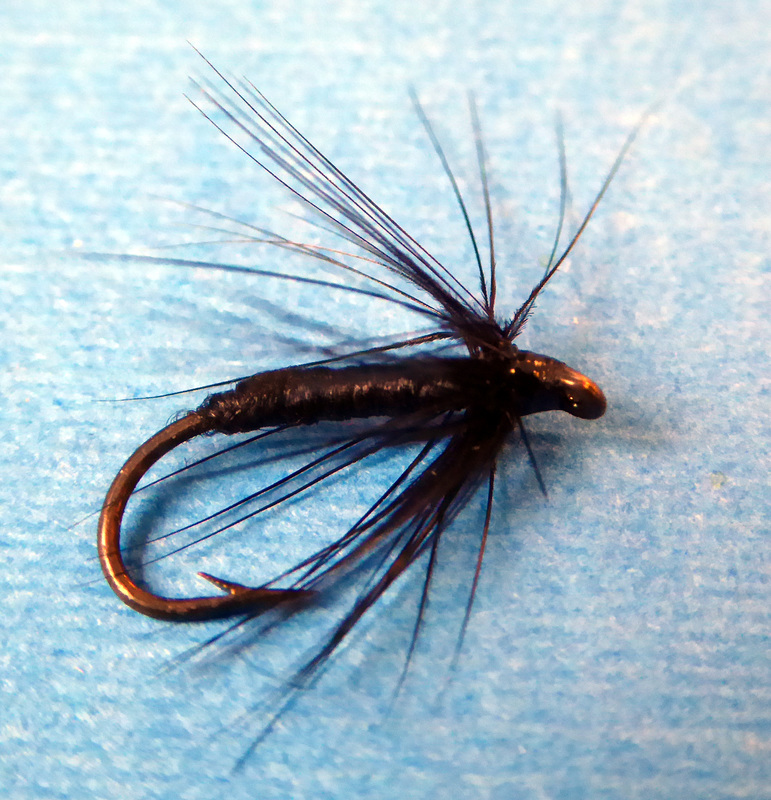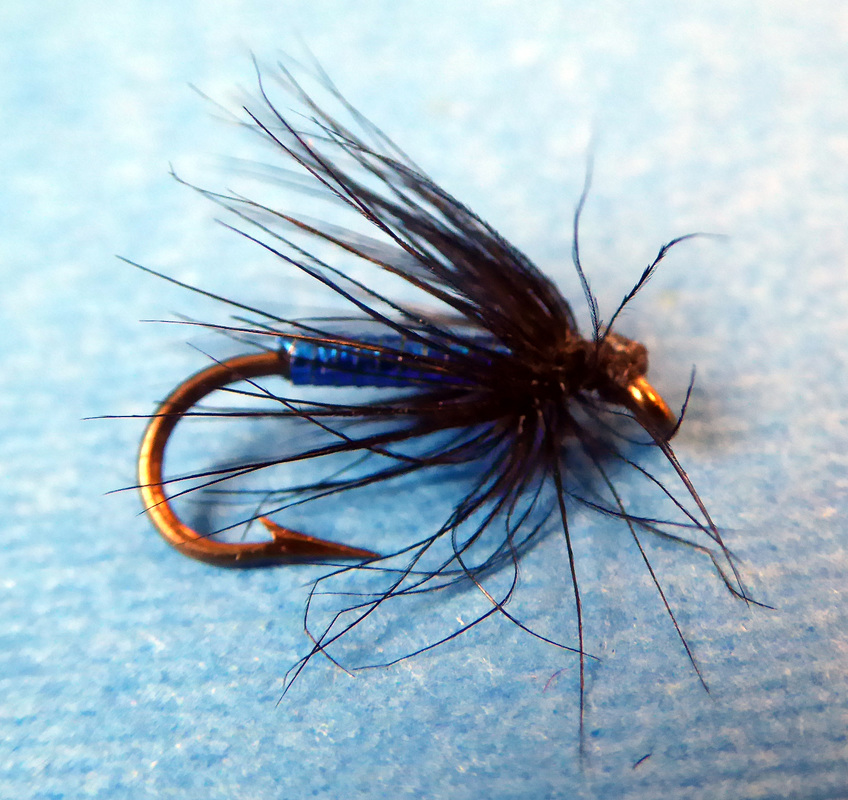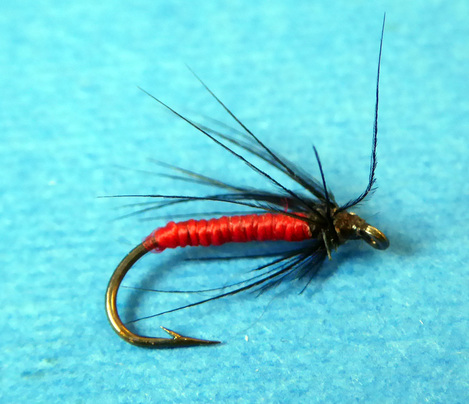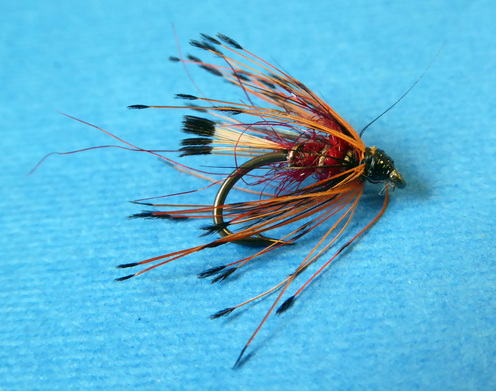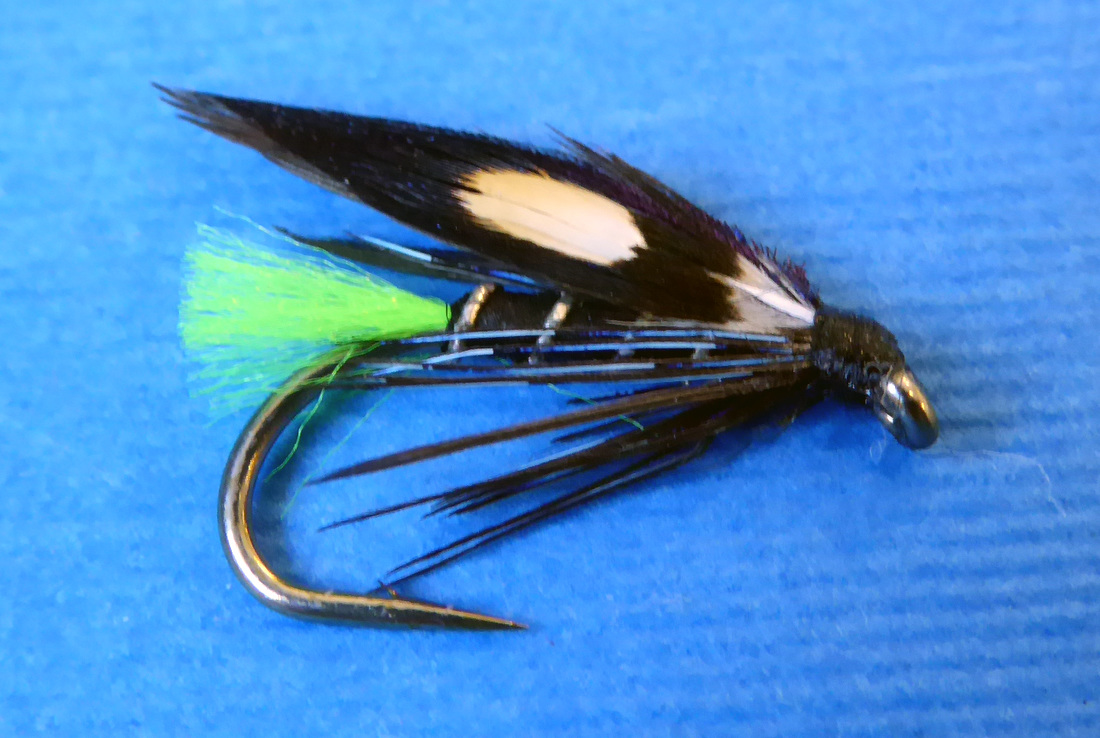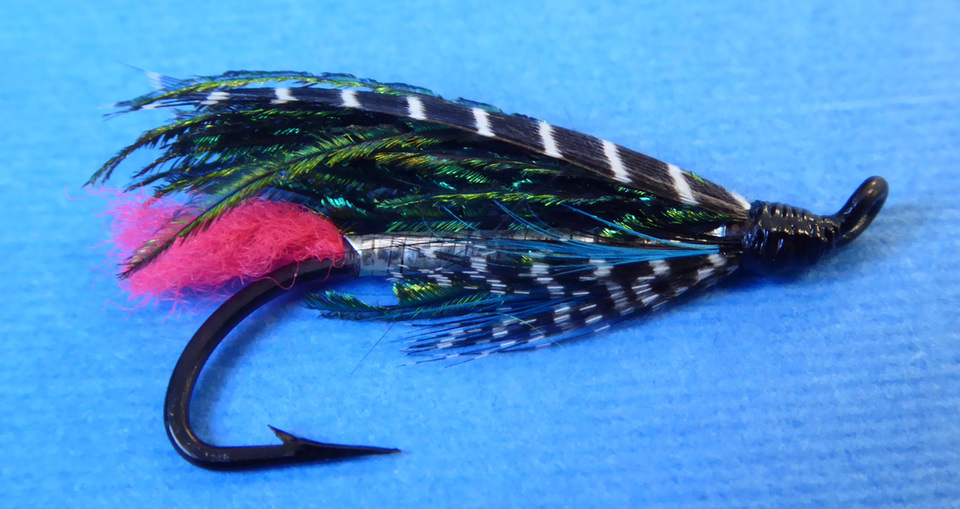Cast of the month - May - Brian Poleson
Whalsey is home to some expert fly fisherman and this month’s cast of the month comes from veteran Whalsey man Brian Poleson. Though Brian has been out of angling for a few years he earned a reputation as an expert angler who has caught many big trout. The cast of flies he recommends have a timeless quality even though they may have fallen out of fashion with the majority of anglers they are still in use in Shetland by a few enlightened anglers.
These simple flies have caught many thousands of trout and deserve being bought back from the box of forgotten relics and back into the boxes of today because these simple spider patterns have never fallen out of favour with the trout.
Brian says
‘These sparse and simple spider patterns are likely taken for small midge pupa. When the wind is light, the time is late and the light is slipping away my favoured cast was sizes 14s or 16s Black Spider on the tail, Snipe and Purple on the middle with Woodcock and Yellow on the top. This was before the days of thin fluorocarbon 2lb Maxima was needed for these small flies to swim properly. I favoured a soft action rod and light drag on the reel as distance casting usually wasn't needed.
We need to be reminded how important the simple Black Spider has been in Shetlands loch fishing history (body= two layers of black tying silk, hackle= a couple of turns black hen) 40 or 50 years ago before it went out of fashion it literally took many thousands of trout, I liked it in size 14 but fished 16 and 12 too. I also caught many fish on the Snipe and Purple, Snipe and Claret and Woodcock and Yellow.
Though not a Shetland fly the Black Spider used to be so important here I feel it deserves not to be forgotten about. I am not sure about this but I formed a tentative opinion about dressing flies for Shetland lochs. Peaty hill lochs = heavily dressed flies and lower clearer water lochs = lighter dressed flies, this is just a notion and probably wrong as often as it is right but one thing for certain is that the Black Spider fished well on all waters'
In an age when fashion and fad in fly tying has never been greater and every week a new 'killer ' material arrives on the scene backed up by marketing campaigns and hefty price tags attached it is refreshing to be reminded of an age when anglers used whatever materials were at hand. In the case of these spider patterns a hook, thread and the hackles of birds such as snipe, plover, woodcock and partridge and starling. The tying of these flies couldn't be simpler, a few layers of appropriately coloured waxed thread on the shank with a few turns of appropriately coloured and marked hackle at the head.
The new generation of buzzer patterns imported to the lochs from the English reservoirs is in part one of the reasons these spiders have been neglected amongst still water anglers though on the northern trout rivers and streams where they originated they have never fallen out of fashion.
It is worth experimenting with colour combinations but the following colours have been proven to work well in Shetland.
Greenwell’s spider- Light olive body with Greenwell hen hackle
For the snipe and purple the correct shade of thread is said to make a difference and the purple supplied by Pearsol,s has stood the test of time.
Spiders tied with a peach floss body can be deadly as can a fluorescent green body in hatches of lime green buzzers .Red, orange Brown and claret bodies are also worthy of inclusion .
It is worth mentioning Polson’s Hares Ear spider which has a scarlet thread body with hares ear dubbed over it which when wet glows.
Incidentally John Hadland who kept the Rod and Line Tackle shop on Harbour Street Lerwick favoured the metallic hackles of a starling for tying black spiders.
Whalsey is home to some expert fly fisherman and this month’s cast of the month comes from veteran Whalsey man Brian Poleson. Though Brian has been out of angling for a few years he earned a reputation as an expert angler who has caught many big trout. The cast of flies he recommends have a timeless quality even though they may have fallen out of fashion with the majority of anglers they are still in use in Shetland by a few enlightened anglers.
These simple flies have caught many thousands of trout and deserve being bought back from the box of forgotten relics and back into the boxes of today because these simple spider patterns have never fallen out of favour with the trout.
Brian says
‘These sparse and simple spider patterns are likely taken for small midge pupa. When the wind is light, the time is late and the light is slipping away my favoured cast was sizes 14s or 16s Black Spider on the tail, Snipe and Purple on the middle with Woodcock and Yellow on the top. This was before the days of thin fluorocarbon 2lb Maxima was needed for these small flies to swim properly. I favoured a soft action rod and light drag on the reel as distance casting usually wasn't needed.
We need to be reminded how important the simple Black Spider has been in Shetlands loch fishing history (body= two layers of black tying silk, hackle= a couple of turns black hen) 40 or 50 years ago before it went out of fashion it literally took many thousands of trout, I liked it in size 14 but fished 16 and 12 too. I also caught many fish on the Snipe and Purple, Snipe and Claret and Woodcock and Yellow.
Though not a Shetland fly the Black Spider used to be so important here I feel it deserves not to be forgotten about. I am not sure about this but I formed a tentative opinion about dressing flies for Shetland lochs. Peaty hill lochs = heavily dressed flies and lower clearer water lochs = lighter dressed flies, this is just a notion and probably wrong as often as it is right but one thing for certain is that the Black Spider fished well on all waters'
In an age when fashion and fad in fly tying has never been greater and every week a new 'killer ' material arrives on the scene backed up by marketing campaigns and hefty price tags attached it is refreshing to be reminded of an age when anglers used whatever materials were at hand. In the case of these spider patterns a hook, thread and the hackles of birds such as snipe, plover, woodcock and partridge and starling. The tying of these flies couldn't be simpler, a few layers of appropriately coloured waxed thread on the shank with a few turns of appropriately coloured and marked hackle at the head.
The new generation of buzzer patterns imported to the lochs from the English reservoirs is in part one of the reasons these spiders have been neglected amongst still water anglers though on the northern trout rivers and streams where they originated they have never fallen out of fashion.
It is worth experimenting with colour combinations but the following colours have been proven to work well in Shetland.
Greenwell’s spider- Light olive body with Greenwell hen hackle
For the snipe and purple the correct shade of thread is said to make a difference and the purple supplied by Pearsol,s has stood the test of time.
Spiders tied with a peach floss body can be deadly as can a fluorescent green body in hatches of lime green buzzers .Red, orange Brown and claret bodies are also worthy of inclusion .
It is worth mentioning Polson’s Hares Ear spider which has a scarlet thread body with hares ear dubbed over it which when wet glows.
Incidentally John Hadland who kept the Rod and Line Tackle shop on Harbour Street Lerwick favoured the metallic hackles of a starling for tying black spiders.
If conditions are not right for fishing spiders Brian likes the following patterns
Tippet and Red
Hook 14- 8
Tail – Golden Pheasant Tippet
Rib- Oval Gold
Body- Red seal fur
Hackle – Golden Pheasant Tippet
Viva Butcher- a good point fly for big fish fished behind a 'potty palmer'
Tail GB 12
Body black floss
rib- holographic silver
wing- paired blue mallard
throat- blue
Jay cheeks jungle cock- hook B 175 8-10
Polson’s Silver 'many years ago when Eric Manson had a shop on the street he kept a limited amount of tackle, I bought some flies among them a Welsh pattern called (I think) Abak Telerafon it was a cross between an Alexandra and a Teal, Blue and Silver, I have looked now and can find no reference to it. With a red fluorescent red or yellow tail this fly has caught me many sea trout and brown trout’
Tippet and Red
Hook 14- 8
Tail – Golden Pheasant Tippet
Rib- Oval Gold
Body- Red seal fur
Hackle – Golden Pheasant Tippet
Viva Butcher- a good point fly for big fish fished behind a 'potty palmer'
Tail GB 12
Body black floss
rib- holographic silver
wing- paired blue mallard
throat- blue
Jay cheeks jungle cock- hook B 175 8-10
Polson’s Silver 'many years ago when Eric Manson had a shop on the street he kept a limited amount of tackle, I bought some flies among them a Welsh pattern called (I think) Abak Telerafon it was a cross between an Alexandra and a Teal, Blue and Silver, I have looked now and can find no reference to it. With a red fluorescent red or yellow tail this fly has caught me many sea trout and brown trout’
